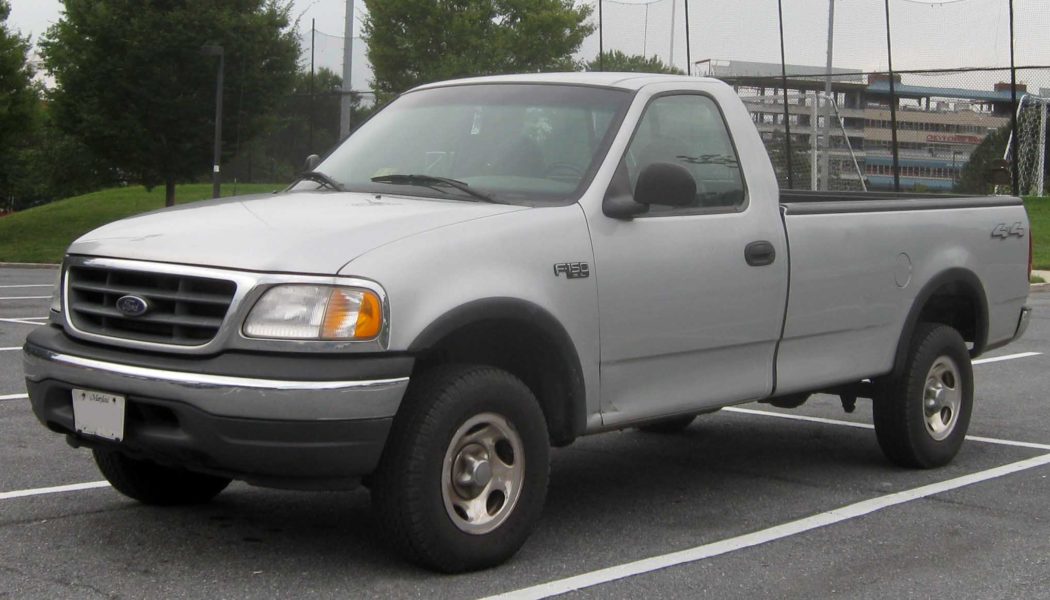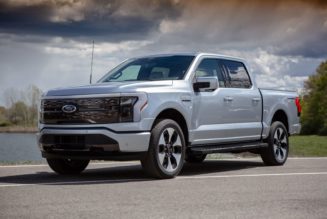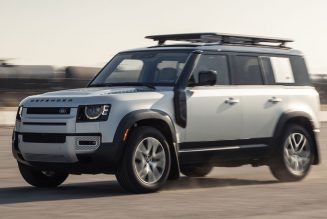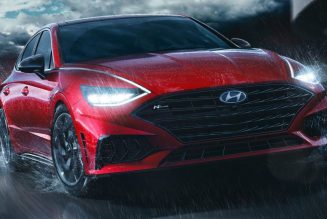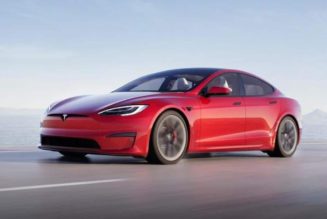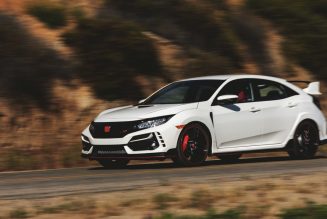On the occasion of the reveal of the 2022 Ford Maverick—the first truly compact pickup truck from the company since the old Ranger was discontinued in 2011—we took a look in our archives and noticed that the 1996 Ford Ranger SVT V-8 prototype is actually out-muscled by the turbocharged 2.0-liter four-cylinder EcoBoost version of the new Maverick. And the V-8, rear-drive Ranger SVT had a lot of trouble getting its tires to hook up, while we assume the all-wheel-drive EcoBoost-powered Maverick will have significantly less trouble.
Either way, it’s worth a look back at a fascinating compact muscle truck that never was, and to consider what the similarly-sized Maverick could bring to the table in terms of performance.
Read our original first test from August 1996 below:
Not everyone’s going to like the SVT Ranger V-8. But then, Ford isn’t building this truck for everyone. In fact, this one-off engineering prototype was only released to MotorTrend for this exclusive first test.
Ford’s Special Vehicle Engineering group knows there’s way too much hair on this sport truck’s knuckles to please the multitude of main-street poseurs who’ve slipped into pickups and designer western wear. So even if Ford decides to fire this potent model down the assembly line, we’re expecting only about 5,000 a year to see the light of day.
But let’s not get ahead of ourselves; Ford Motor Co. hasn’t committed this truck to production yet. Created for Ford’s Special Vehicle Team (SVT), which is responsible for the 305-horsepower SVT Mustang Cobra and F-150 Lightning full-size pickup, this one-off has been undergoing review by high-level managers and engineers for possible production in the ’98 model year.
An elite internal group established in 1991, SVT has been commissioned to create factory-produced “driver’s cars and trucks” with a balance between engine and chassis, road holding and supple ride, and refinement and performance.
What we found during our demanding review was a well-sorted-out development mule with quick steering, a firm but reasonable ride, and chassis dynamics that reminded us distinctly of the past-generation Mustang GT. But its most unrefined and entertaining talent was the ability to whip 240 loud horses into action. Yeee-haaaaaa!
A close look at the ingredients baked into the bones of this bad-boy pick ’em-up truck reveals why we can’t wait to get one into our long-term test fleet. The foundation is an anvil-simple 4×2 Ranger. Ford engineering then raided the Mustang GT and Explorer parts bins to create an extremely lively and capable version of its compact pickup.
Inside, things are likewise simple. The instrumentation consists of standard Ranger fare: a speedo, a tachometer, and coolant-temp, oil-pressure, voltage, and fuel-level gauges. There’s a center console with dual cupholders and a shallow, covered storage bin. The seats are buckets with firm foam and “SVT” stitched into the fabric. SVT obviously spent its money on modifying the go-stuff and not on extra interior frills.
The base price on this red-hot hauler is likely to hover just below $20,000 with goodies like air conditioning, power steering, a sliding rear window, a premium sound system, and foglamps. Add in power options and a passenger-side airbag and you’re out the door for about $22,000. That isn’t cheap, but hey, it’s about four grand less than a nicely equipped Mustang Cobra, and you can’t carry a Jet Ski or a set of dirt bikes in the back of a pony car.
SVT’s styling philosophy is to skip the wild graphics and tack-on air scoops. As a result, this truck is a bit of a sleeper with only four clues to the beast within: the wide wheels and tires, a mildly lowered suspension, four-wheel discs, and two large stainless exhaust pipes poking through the rear roll pan.
The most radical, but not obvious, modification to the exterior sheetmetal is the grafted-on Explorer front end. While that might sound like a backyard tweak, it actually entailed some pretty serious bodywork and welding because the straight edge of the Explorer’s front fenders wouldn’t normally mate with the curvy leading edge of the Ranger’s doors.
Getting back to the altered exterior elements: The chrome five-spoke wheels were borrowed from a Mustang Cobra R. Debate continues within SVT over a flat-silver or chrome finish for the production truck. There’s no question the Ranger SVT has a big footprint. The front wheels are shod with 255/45ZR17 Goodyear Eagle GS-Cs. In the back, even wider 285/40ZR17s were fitted on the same 17×9.0-inch alloys.
Great rubber can make a big difference in the turning and stopping performance of any vehicle, but it can’t overcome poor weight balance. Remember, this is a pickup. They’re inherently tricky when it’s wet or icy and there’s no load in the bed, because most of the static weight (in this case, 2,204 of the 3,554 pounds) is concentrated over the front wheels. With an iron-block V-8 in a compact truck, the problem can be intensified. Despite this condition, the SVT Ranger posted a respectable best stop of 148 feet from 60 mph—thanks mostly to the four-wheel discs and the anti-lock electronics stolen from the Explorer.
SVT engineers gave us a taste of things to come with this Ranger’s prototype short- and long-arm suspension: The next-generation Ford compact truck will be fitted with a similar SLA system. Critical to the cab’s ride, this front suspension provides a reasonably smooth cruise given its core missions of steering accuracy and tight anti-roll control. Even with its high-rate springs and big roll bar, we never felt uncomfortable. And that’s saying something considering Michigan’s pothole-infested concrete road system.
The Ranger’s engine bay is filled with a 5.0-liter Cobra OHV V-8 pulled from a pre-’94 Mustang and equipped with an oil cooler, a fabricated aluminum radiator with a thick core, custom headers, and a hand-built stainless exhaust system with about as many special sections as Bill Gates’ tax return. Still, as tricky as that all may sound, we’ve seen much tighter engine-to-engine-bay fits. This truck experienced no cooling problems, even during track testing, and seemed to have completely reasonable service access. Given a modicum of self-restraint, a V-8 Ranger driver can eke out highway fuel economy in the high-20-mpg range. Around town, it should be mid-teens, or lower if you’re constantly squeezing the go-trigger.
The 5.0 is the engine that rebuilt the Mustang legend. Driving it in the Ranger illustrates why. Despite outstanding acceleration numbers, the 7.2-second scoot to 60 mph doesn’t even begin to tell the whole performance story. Just like any powerful, unloaded pickup, the Ranger has trouble hooking up with the pavement. And that’s fine if your mission is to fry Goodyears and leave a thousand miles worth of black rubber stripes at every intersection. But it also makes leaving the line an involved process. To get our best time, we had to launch with just 1,200 revs on the tach, and we still had too much spin.
Ford took a scientific approach to the wheelspin gremlin by installing a Zexel-Torsen torque-sensing differential—but it was easily overwhelmed. Of course, with a few well-positioned bags of gravel or peat moss in the bed to place some weight over the rear wheels, 0—60 times might have been closer to the mid-to-low sixes. This Ranger’s quarter-mile best of 15.1 seconds is quick enough to surprise Z28 drivers, but it’s the stout 94.1-mph trap speed that shows the midrange and top-end go-power of this none-too-aero pickup.
A rugged TR-3550 Tremec five-speed manual transmission was bolted behind the 5.0, ensuring that durability would be there for repeated “executive reviews.” Our experience is that these boxes are bulletproof. On the downside, the 5.0-liter’s rev limit and the top of the Tremec’s second gear occur just below 60 mph, requiring a shift to third that added a frustrating extra couple of tenths to our runs to 60.
If this little performer actually makes it to market for under $20,000, we think Ford might want to adjust its volume projections to more than 5,000 a year. The Ranger SVT is an absolute hoot to drive.
Tech Data: Ford Ranger SVT Prototype
| GENERAL/POWERTRAIN | |
| Body style | 2-door, 2-passenger |
| Vehicle configuration | Front-engine, rear-drive |
| Engine configuration | V-8, OHV, |
| 2 valves/cylinder | |
| Engine displacement, ci/cc | 302/4942 |
| Horsepower, hp @ rpm, SAE net | 240 @ 4800 |
| Torque, lb-ft @ rpm, SAE net | 285 @ 4000 |
| Transmission | 5-speed manual |
| Axle ratio | 3.73:1 |
| DIMENSIONS | |
| Wheelbase, in./mm | 113.9/2893 |
| Length, in./mm | 196.3/4986 |
| Base curb weight, lb | 3554 |
| Fuel capacity, gal. | 17.0 |
| Fuel economy, | |
| EPA city/hwy., mpg | 17/25 (est. ) |
| CHASSIS | |
| Suspension, f/r | Upper & lower control arms/live axle |
| Steering | Recirculating ball, power assist |
| Brakes, f/r | Vented discs/discs, ABS |
| Wheels | 17x 9.0, chromed aluminum alloy |
| Tires, f/r | Goodyear GS-C, |
| 255/45ZR17//285/40ZR17 | |
| PERFORMANCE | |
| Acceleration, 0-60, sec | 7.2 |
| Quarter mile, sec/mph | 15.1/94.1 |
| Braking, 60-0, ft | 148 |
| PRICE | |
| Base price | $19,950 (est. ) |
| Price as tested | $22,250 (est. ) |
